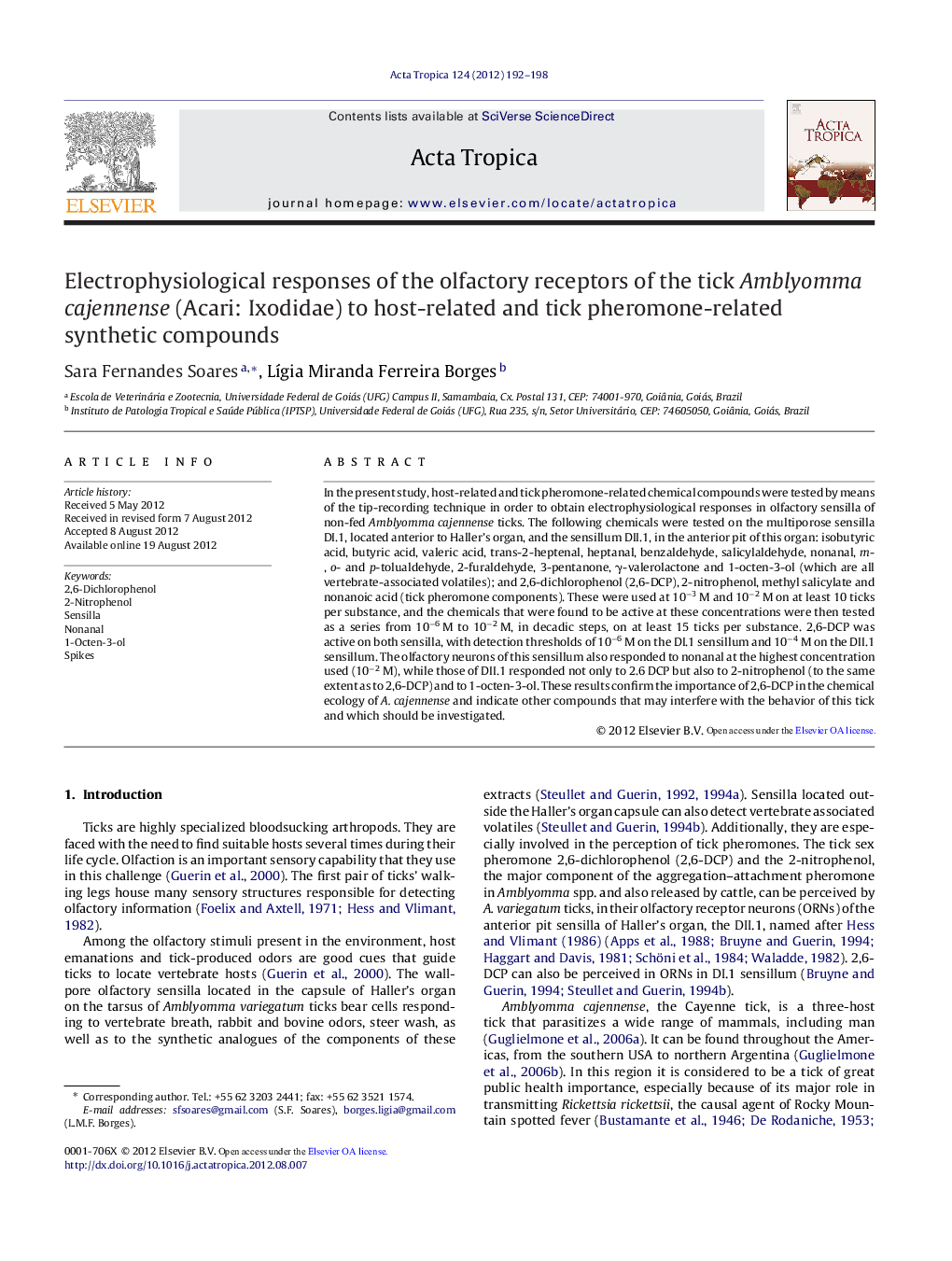| کد مقاله | کد نشریه | سال انتشار | مقاله انگلیسی | نسخه تمام متن |
|---|---|---|---|---|
| 6128015 | 1221425 | 2012 | 7 صفحه PDF | دانلود رایگان |

In the present study, host-related and tick pheromone-related chemical compounds were tested by means of the tip-recording technique in order to obtain electrophysiological responses in olfactory sensilla of non-fed Amblyomma cajennense ticks. The following chemicals were tested on the multiporose sensilla DI.1, located anterior to Haller's organ, and the sensillum DII.1, in the anterior pit of this organ: isobutyric acid, butyric acid, valeric acid, trans-2-heptenal, heptanal, benzaldehyde, salicylaldehyde, nonanal, m-, o- and p-tolualdehyde, 2-furaldehyde, 3-pentanone, γ-valerolactone and 1-octen-3-ol (which are all vertebrate-associated volatiles); and 2,6-dichlorophenol (2,6-DCP), 2-nitrophenol, methyl salicylate and nonanoic acid (tick pheromone components). These were used at 10â3 M and 10â2 M on at least 10 ticks per substance, and the chemicals that were found to be active at these concentrations were then tested as a series from 10â6 M to 10â2 M, in decadic steps, on at least 15 ticks per substance. 2,6-DCP was active on both sensilla, with detection thresholds of 10â6 M on the DI.1 sensillum and 10â4 M on the DII.1 sensillum. The olfactory neurons of this sensillum also responded to nonanal at the highest concentration used (10â2 M), while those of DII.1 responded not only to 2.6 DCP but also to 2-nitrophenol (to the same extent as to 2,6-DCP) and to 1-octen-3-ol. These results confirm the importance of 2,6-DCP in the chemical ecology of A. cajennense and indicate other compounds that may interfere with the behavior of this tick and which should be investigated.
Electrophysiological responses of olfactory DI.1 and DII.1 tarsal sensilla of Amblyomma cajennense ticks to pheromone-related and host-related chemical compounds during 500 ms of stimulation.Highlights⺠The responses of Amblyomma cajennense to different chemicals was tested in electrophysiology. ⺠The tarsal olfactory sensilla DI.1 and DII.1 were the target. ⺠DI.1 responded to the sex pheromone 2,6-DCP and nonanal. ⺠DII.1 responded to 2.6 DCP, to 2-nitrophenol and to 1-octen-3-ol.
Journal: Acta Tropica - Volume 124, Issue 3, December 2012, Pages 192-198